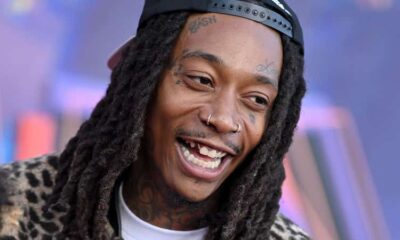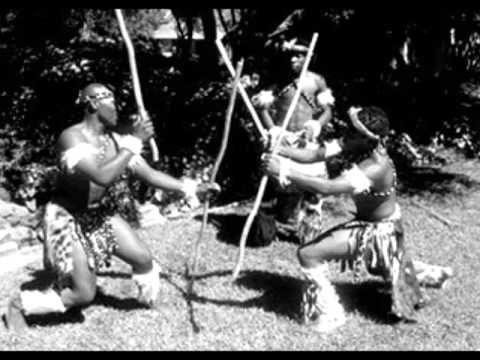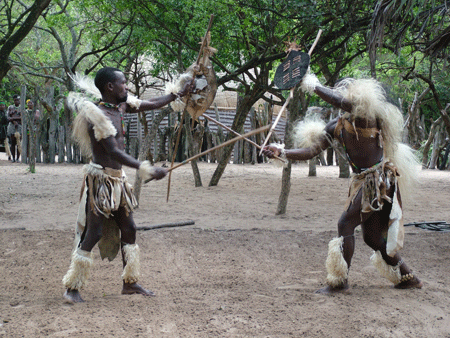General
NGUNI STICK FIGHTING: History Of The Nguni Stick Fighting In South Africa

Nguni Stick Fighting is a martial art generally rehearsed by teenage Nguni herdboys in South Africa.
Every fighter is outfitted with two long sticks, one of which is utilized for guard and the other for offense. Little protective layer is utilized. it’s also known as donga, or dlala ‘nduku, which literally translates as ‘playing sticks’.
The Nguni Stick Fighting was popular in the Nguni ethnic gathering (Zulu). It further glances at how the game has advanced after some time. The word or term Nguni is the collective name for ethnic gatherings of Bantu individuals dwelling in the South Africa. These gatherings are partitioned into South Nguni and Northern Nguni. The Southern Nguni comprise of Zulu, Ndebele and Swazi individuals and the Northern Nguni includes Xhosa, Bomvana, Mpondo and Thembu individuals.
Origins Of Nguni stick fighting
There is an extraordinary discussion about the inceptions of this indigenous game inside the Zulu gathering, some follow it to the hours of Shaka Zulu and others to Amalandela, the child of Gumede, around 1670. Anyway it is commonly concurred that during Shaka’s rule this game was utilized as a method of preparing youngsters for war and self-preservation.
This was reached out to the hours of Dingaan, who was Shaka’s replacement. As new pioneers rose the reason for stick battling additionally changed. During the rule Cetshwayo who succeeded Dingaan, it was utilized as methods for settling interior questions, nonetheless, there were conventions as it was not proposed for the reasons for executing.
Stick battling structures a fundamental piece of Zulu social convention, satisfying as it does a significant educating reason. Accordingly, for Zulu guys, stick battling is significant in maintaining a social framework that develops acknowledged jobs and methods of conduct.
Participants Of Nguni stick fighting
Participation is restricted to males only, there is no particular age for when one should begin rehearsing and by and large young men become familiar with the action while they are going the cows. This gives a chance to them to battle their way up to the situation of initiative among different herders. Little fellows get familiar with this by watching and impersonation. The young men additionally utilize the chance to hone their abilities. At this stage they utilize little tree bushes rather than genuine sticks. Genuine sticks are permitted, yet when they are utilized; the contenders abstain from hitting each other’s heads.
Following this stage youngsters graduate and partake in open services, for example, parties (between region stick battling rivalries) and weddings. Contenders and their sticks are normally customarily arranged utilizing conventional medication arranged by a herbalist. The battles are administered either by Induna yenzinsizwa (headmen of youngsters likewise alluded to as igoso; or umphathi wezinsizwa (war chiefs) authorities who guarantee that things don’t turn crazy.
Weapons Used In Nguni stick fighting
Customarily, men own their battling sticks, which are put away in the tops of their homes. Much of the time a man would claim an assortment of sticks from which a choice would be made by the proprietor before a battle. At the age of 16 a Zulu kid would be taken into the timberland by his dad where he would cut his own stick from the trees. When the kid arrives at adulthood he may obtain further sticks, either making them himself or having sticks made by an authority.
The movement of stick battling action requires the utilization of three unique sticks, each with an alternate reason. The first is utilized for striking (Induku), the second for safeguard for example body insurance (Ubhoko), this stick long contrasting with the one for striking; there is likewise a short stick (umsila) joined by a little shield (ihawu) to ensure the knuckles.
Induku is depicted as ” a solid stick or shaft of wood without a handle. The stick is cut smooth and utilized explicitly for stick battling. The length of the induku relies upon the physical height of its proprietor, however is commonly around 88 centimeters long. The induku’s circuit increments marginally from base to top and the additional weight that the head conveys upgrades the versatility of the stick during hostile moves. A bit of cowhide can be tied around one finish of the stick to make sure about the contender’s hold on the weapon, and the rush of a dairy animals’ tail can be tied around the base of the stick to shroud a sharp point. In spite of the fact that this sharp point can be utilized for cutting, doing so is viewed as unseemly during a decent stick battle.”
Ubhoko is portrayed as ” a long, smooth stick that tightens to a sharp point. As a guarded weapon, it is skilfully moved with the wrist of the left hand and used to shield the body of a warrior from the rival’s blows. In spite of the fact that its length relies upon the physical height of its proprietor, the ubhoko is intended to guarantee assurance from head to foot, so is outstandingly longer than induku. Ubhoko is commonly around 165 centimeters long. In spite of the fact that the ubhoko could be utilized as a cutting weapon; in a stick battle, convention requests that it be utilized only with the end goal of protection”
Umsila is portrayed as being ” held in the left hand along with ubhoko. Not utilized for battling all things considered, it is utilized rather to maintain the little shield, or ihawu, that ensures the left hand. Warriors in Nongoma keep up that umsila is likewise used to secure the face during a stick battle. As a tasteful embellishment, Nongoma contenders tie strings of gazelle skin to the head of umsila.”
Ihawu is portrayed as “a generally little and oval-formed bit of cow skin, held in the left hand. During Shaka’s system, warriors were positioned by methods for the shade of the shields they conveyed. There is no set size for ihawu, in spite of the fact that it ought to be sufficiently huge to secure the hand and wrist and little enough not to block on ubhoko’s portability. Generally speaking, notwithstanding, the shield utilized for stick battling is between 55 centimeters and 63 centimeters in length and 31 to 33 centimeters wide.”
How The Nguni stick fighting battle Looks Like;
Before the battle starts two warriors face one another and tap each other’s shield or sticks. This is seen as reasonable sportsmanship. In different cases this standard isn’t followed as the stick warriors dispatch the battle via landing hacking blows. These blows are hazardous as they are intended to overwhelm the rival, bringing about genuine wounds.
A portion of these wounds or lasting imprints expect included significance as they are seen as symbols of honor, the most profoundly perceived being a scar on the head which is known as inkamb’ beyibuza (any place you go individuals ask what’s that from?).
The development of Nguni stick fighting
In time this likewise implied a change from stick battling being utilized as a method of preparing youngsters for war and self-preservation, to a game that now and again could gain out of power. This has happened when threats have gone past the wearing grounds, setting the lives of non-members’ under danger. This is one reason why in past hundreds of years the game occurred in an open space away from the residence. The character of the battle additionally relies upon the disposition and event as certain battles occur at sorted out competitions. Stick battling is likewise mainstream during weddings or at young ladies’ coming out functions called Umemulo. Youthful and single members known as Amasoka are wanting to win, yet additionally to make mark for themselves by being top choices and being famous among the young ladies.

-

 Technology2 years ago
Technology2 years agoVoIP Number: Everything You Need To Know
-

 Music3 weeks ago
Music3 weeks ago[Music] Gnash Ft Olivia O’Brien – I Hate you, I Love you
-

 Music2 weeks ago
Music2 weeks ago[INSTRUMENTAL] John Legend – All Of Me
-

 Music3 weeks ago
Music3 weeks agoAlan Walker – Faded [INSTRUMENTAL]
-

 Music2 weeks ago
Music2 weeks ago[Video] 21 Savage ft. Offset & Metro Boomin – Rap Saved Me
-

 Music3 weeks ago
Music3 weeks ago[Instrumental] Wiz Khalifa – See You Again ft. Charlie Puth
-

 ANE Stories3 months ago
ANE Stories3 months ago[STORY] AMAKA THE LESBIAN (Complete Episodes)
-

 Music3 weeks ago
Music3 weeks ago[Music] Akon – Sorry Blame It On Me


































